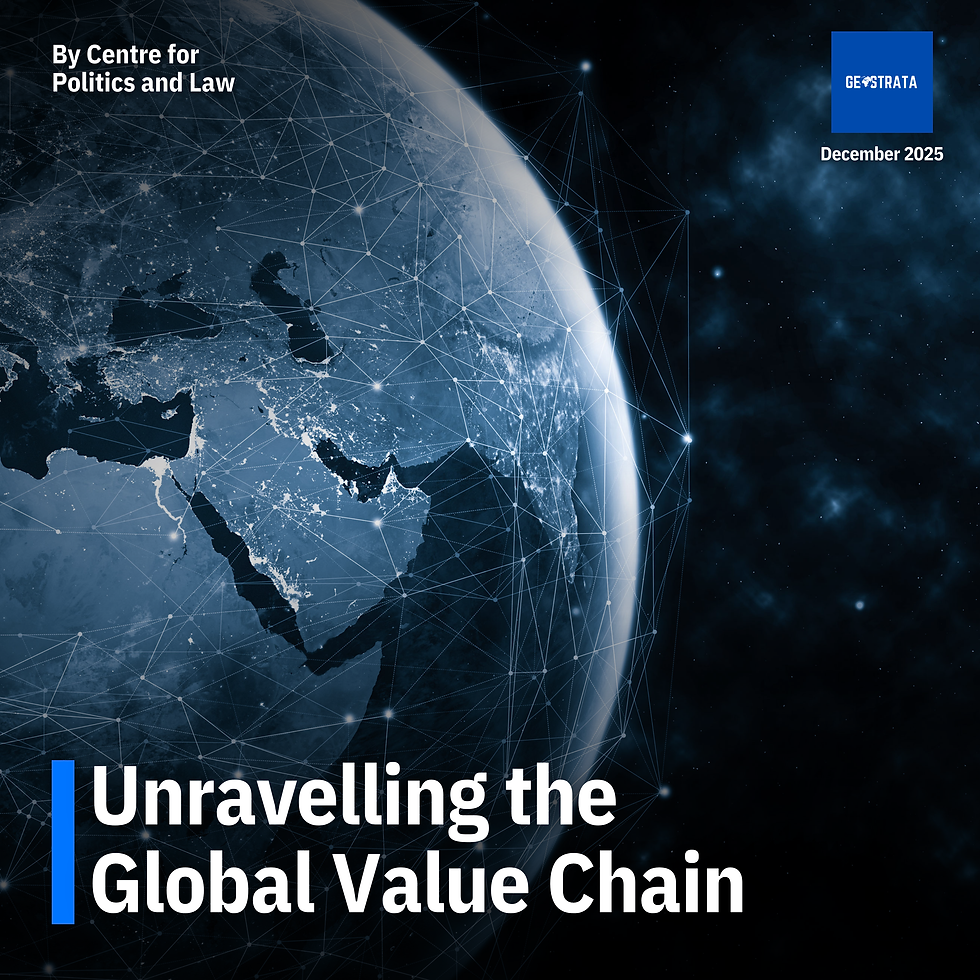The Empire Strikes, Broke: Military Keynesianism and Russia’s Impending Recession
- THE GEOSTRATA

- Aug 23
- 5 min read
In a kite fight, regardless of asymmetrical build, if the stronger kite gets bruised with multiple tears or if the spool runs out, it has no choice but to concede even if it was winning the fight in the first place.
Illustration by The Geostrata
Russian Economy Minister, Maxim Reshetnikov, on the 19th of June, 2025, warned that the Russian economy is on the verge of slipping into a recession. In this context, the prospects of Russia forcefully resorting to peace talks become more probable than ever.
After months of speculation regarding Russia’s economic resilience against the international sanctions since the beginning of its special military operations in Ukraine, which has led to its imports dwindling, a vacuum filled by China and the Central Asian Republics, the long-term implications of the war economy are becoming more pronounced.
What calls for greater scrutiny, however, is the nature of economic resilience under play here. The only reason why the Russian economy has been as resilient as it has, at least until now, is due to exorbitant increases to government consumption in the war economy that, in turn, has been resulting in a multiplier effect on the GDP.
The increase in government consumption in question is almost entirely by virtue of military expenditure, with a y-o-y increase in expenditure by 15.8% in 2022, 17% in 2023 and 53% in 2024.
Simultaneously, the Russian GDP faced a 1.4% decline in 2022 and an increase of 4.1% in subsequent years (2023 and 2024). Since the onset of Russia’s special military operations in Ukraine in early 2022, the Russian economy has become the very epitome of military Keynesianism.
The widespread usage of the term military Keynesianism, that is, Russia’s attempts at driving GDP growth, or even GDP stabilisation through heightened military government expenditure, first surfaced in diplospeak regarding the Russian economy, in the second half of 2022 and developed fully between the end of 2023 and the first half of 2024.
In the midst of this, military equipment manufacturers and war-linked industries were subjected to inflated rates of growth, increasing 3.6% in 2023 and 3.9% in 2024. This growth, however, came at the expense of civilian industries and public development projects. The 2025 federal budget allocated 8% of the country’s income to defence expenditure, crowding out social spending, superseding the combined allocation to social policy, healthcare and education.
THE CONVOLUTION OF RUSSIA'S FISCAL POLICY
The Russian Government has increased spending as a part of Keynesian fiscal stimulation. This policy remains in effect in spite of interest rate signals wherein the Russian central bank increased the rate to 20% as of June 2025.
The continuation of defence spending regardless of tightening monetary policy exhibits the government’s inclination towards strategic autonomy and economic stabilisation over orthodox macroeconomic balance. It underscores a deliberate military Keynesian approach that treats defence outlays as economic stimuli and tools of national resilience.
With interest rates already exorbitantly high, an increase in government spending leads to a higher cost of borrowing for private borrowers, i.e. firms.
Let us examine the situation through the IS-LM model for a better visualisation:
Figure 1: IS-LM Curve; Increase in Govt. Spending
With income plotted on the X-Axis, interest rates plotted on the Y-Axis and the IS and LM curves drawn as above, an increase in government expenditure leads to a shift in the IS function to the right, thus increasing interest rates. Which means, as the central bank sets interest rates at 20% undertaking a contractionary monetary policy, an expansionary fiscal policy by way of excessive defence spending gravely bruises the economy and disrupts the functioning of the civilian-use goods market and the money market.
Russian fiscal policy is merely a list of publicly made statements that dread the settlement of recessionary forces within the economy. With the economy in such a pitiful state, what does Russian military Keynesianism hope to achieve?
THE BEST OF TIMES, THE WORST OF TIMES
Russia’s military operations in Ukraine have provided a significant boost to peripheral Russian provinces comprising small towns and villages. An estimated 55% of the GDP was concentrated in the ten richest regions, while the ten poorest accounted for only 1%.
The war, as surprising as it may be, led to the eradication of a disparity this drastic. The previously booming regions, those which harboured industries producing or functioning on either oil or gas or both, saw a steep decline in outputs due to looming sanctions, while textile producers, logistics, transport, agrifood and so on, saw production boom for the first time in ages. There are two strata of people who, in the light of increased defence expenditures, have benefited from what can only be termed as long-term economic self-destruction.
These are those employed in sectors auxiliary to the war and those deployed in the war itself, i.e. military military-industrial complex.
At the same time, however, the increase in defence spending that is both a cause and consequence of increased recruitment into the military has led to a significant increase in deaths and injuries, with the toll on casualties approaching a round million, with 250,000 deaths and about 700,000 injuries estimated. It has also led to innumerable citizens resorting to exile to prevent themselves from being forcibly drafted since 2022.
The two factors have aggregated into a severe shortage in Russia’s labour supply, which has been estimated to be about 7% of its total workforce, or 5 million workers. It is a statistic that prevails regardless of the rate of unemployment being as low as 2%.
THE RUSSIAN GUIDE TO EMBELLISHING AN EMBARRASSMENT
As Russia faces its woes on the battlefield with rates of advance as low as 50 metres in certain areas, a high and ever-increasing quantum of fatalities and casualties, decreasing territorial gains compounded by losses in terms of defence equipment, Putin must necessarily reassess his hand before placing his next bet.
The self-proclaimed military operations on Ukraine have been a war of attrition with Putin testing Ukrainian patience, tolerance and defences, provoking them just enough so as to not be painted as a war criminal in the colours of the Geneva Convention, or at least, not the only war criminal.
However, with dwindling resources and dimmed hopes, especially as far as the economy is concerned, Russia has two prospective modes of operation - rip off the band-aid, quick and fast, abandon the attrition and make a decisive move reducing Ukraine’s defensive capabilities to the soil, or resort to the peace talks that President Donald Trump is more than happy to mediate.
Don’t pick a fight you can’t win - but never continue one when your Economy Minister warns you to stop.
BY DIA ATAL
TEAM GEOSTRATA
.png)









This was a great read. Very well put by the author
Insightful read